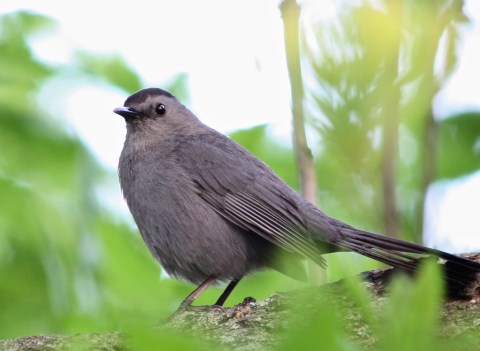Did you ever wonder why some birds, such as Bluebirds and Robins, lay blue or bluish green eggs? And just as interesting why, in some cases, Bluebirds which generally lay blue eggs, a nest may comprise eggs that are almost white?
The earliest avian eggshells probably lacked color, or pigmentation. Over time, most likely to protect the eggs from predators, birds evolved a diverse range of colored shell markings from mottled brown, gray and beige to rainbow hues from pure white to pale pink, lavender, yellow, aqua, orange, blue, born and even black.
The molecules that cause pigmentation in bird eggs are biliverdin (the blue-green shades) and protoporphyrin (red and brown colors and speckles) but we can talk about blue eggs without getting too technical.
Basically, blue and blue-green strikes a balance between white and very dark colored eggs. Darker eggs are predicted in moderate light to shield the embryo from intense light, including harmful UV radiation. If when eggs are in an exposed nest and the shells are too dark, it can cause the interior to heat up, similar to a “dark car effect.” Simply stated, blue eggs regulate the effects of sunlight on the developing chick (embryo).
This doesn’t explain entirely why Eastern Bluebird eggs range from white to blue green. Many cavity nester’s eggs are white because the adults need to see the eggs in the dark. Wood Ducks are an example of cavity nesters with white eggs. American Robins generally nest in trees or a semi-exposed site and their eggs are blue, affording both protection from dangerous UV light and low risk from heating up. Eastern Bluebirds are cavity nesters but only about 4 to 5 percent of their eggs are white. Oftentimes when learning about a topic, myriad more questions come to mind!
To read more –
https://journals.sagepub.com/doi/abs/10.3184/175815511X13207833399666
 In reading about blue eggs I thought readers would enjoy seeing the amazing speckled and pear-shaped brilliant blue egg of the Common Murre, from USFWS
In reading about blue eggs I thought readers would enjoy seeing the amazing speckled and pear-shaped brilliant blue egg of the Common Murre, from USFWS
Some birds with blue eggs that nest locally include Red-winged Blackbird, Gray Catbird, Snowy Egret, Great Blue Heron, Little Blue Heron, House Finch, Bluejay, Goldfinch, European Starling, Eastern Bluebird, and American Robin.
 American Robin nest at a friend’s home
American Robin nest at a friend’s home
Both Bluebird nest egg photos courtesy Google image search





































































































